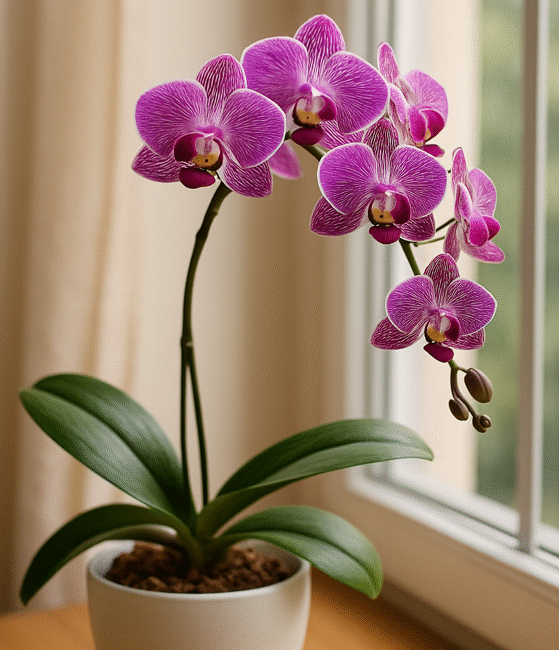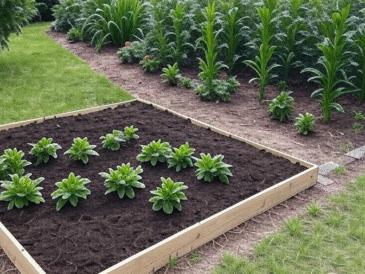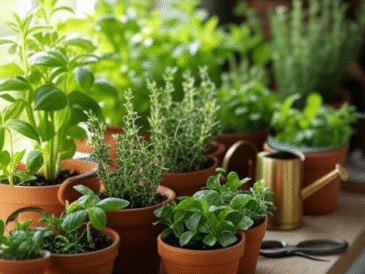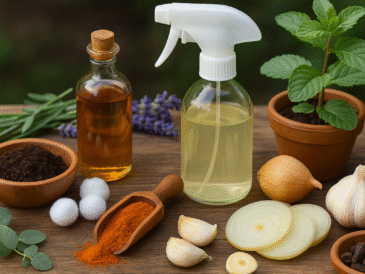Have you ever bought a beautiful orchid, only to watch it sit in its pot without ever blooming again? You’re not alone.
Orchids are stunning, exotic plants that can brighten up any home—but getting them to bloom consistently is another story. Many people unknowingly make small mistakes that stop their orchids from flowering. The good news? With a few simple adjustments, you can turn that sad, bloomless plant into a show-stopping centerpiece.
In this guide, I’ll walk you through the most common orchid care mistakes and how to fix them—based on my own experience and trial-and-error over the years. Whether you’re a seasoned plant parent or just starting out, these tips will help you understand how to get orchids to bloom and keep them thriving year-round.
🌱 Why Aren’t My Orchids Blooming?
If your orchid looks healthy but won’t bloom, chances are it’s missing a key element in its care routine. Unlike typical houseplants, orchids have some very specific needs—many of which mimic their native tropical habitat.
Let’s dive into the top 10 mistakes orchid owners make and how you can avoid them.
🌊 Mistake #1: Overwatering Your Orchid
This is hands down the most common mistake I see—because it’s so easy to do.
Orchids don’t like wet feet. Their roots need to breathe, and constant moisture can lead to root rot. If your orchid’s roots look brown and mushy, it’s drowning.
Fix: Water only when the potting medium is dry to the touch. Use pots with good drainage, and never let your orchid sit in water.
☀️ Mistake #2: Not Enough Light
Light is crucial if you want to see blooms. Many orchids need bright, indirect light to flower—but most people tuck them in dark corners or on low-light shelves.
Fix: Place your orchid near a bright window with filtered light (like a sheer curtain). East-facing windows work great!
🌡️ Mistake #3: Ignoring Temperature Needs
Orchids are surprisingly picky about temperature. Sudden changes or extremes can stress them out, causing them to skip blooming altogether.
Fix: Keep them in a room that stays between 65–75°F (18–24°C) during the day, and allow it to drop slightly at night. Avoid placing them near heating vents or drafty windows.
🍃 Mistake #4: Stagnant Air
Orchids love fresh air! Poor circulation encourages mold, pests, and fungus, which can all inhibit flowering.
Fix: Place your orchids in a room with good airflow, or run a gentle fan nearby (not directly on them). Even cracking a window a few hours a day can help.
💧 Mistake #5: Low Humidity
Tropical orchids thrive in humid conditions—way more than most indoor environments provide.
Fix: Boost humidity with a pebble tray, humidifier, or by misting lightly every morning. Aim for 50–70% humidity for happy blooms.
🌿 Mistake #6: Using the Wrong Potting Medium
Standard soil just won’t cut it for orchids. Their roots need a loose, breathable mix.
Fix: Use orchid-specific bark or sphagnum moss. Repot every 1–2 years to refresh the medium and allow healthy root growth.
🌸 Mistake #7: Forgetting to Fertilize
Orchids need nutrients to bloom. If they’re only getting water, you’re missing a key step.
Fix: Feed your orchid with a balanced fertilizer (like 20-20-20) every two weeks during active growth. In winter, cut back to once a month.
🪴 Mistake #8: Skipping Repotting
A root-bound orchid won’t bloom well. Plus, old potting mix breaks down and holds too much moisture.
Fix: Repot every 12–24 months, ideally after flowering ends. This gives your orchid fresh space and nutrients to prepare for the next bloom.
🐛 Mistake #9: Overlooking Pests and Diseases
Even the healthiest orchid can fall victim to spider mites, mealybugs, or fungal infections. These pests can sap energy and stop blooming in its tracks.
Fix: Inspect your plant weekly. Wipe leaves with a damp cloth, and treat any signs of pests promptly with neem oil or insecticidal soap.
🔄 Mistake #10: Too Much Stress from Moving
Orchids hate change. Moving them from room to room, adjusting light or humidity quickly—it can all shock the plant and delay flowering.
Fix: Find a good spot and stick with it. If you must move your orchid, do it gradually and give it time to adjust.
✅ How to Get Orchids to Bloom: The Takeaway
Let’s recap. If your orchid isn’t blooming, start by checking:
- Are you watering too often?
- Is it getting enough light?
- Are temperatures stable?
- Is the humidity right?
- Have you repotted and fertilized regularly?
Tackle each of these areas and you’ll be well on your way to beautiful, long-lasting orchid flowers.
From my own experience, once I figured out my orchid was sitting too far from the window and I had been giving it too much water—it was like magic. Two months later, the buds came, and it hasn’t stopped blooming since!
🌼 Final Thoughts: Orchids Aren’t Hard—Just Different
Getting orchids to bloom isn’t impossible—it just takes a little know-how and patience. Once you get their care routine dialed in, they’ll reward you with some of the most breathtaking flowers you’ve ever seen.
So don’t give up on that stubborn orchid just yet. With the right care, your next bloom might be right around the corner.




